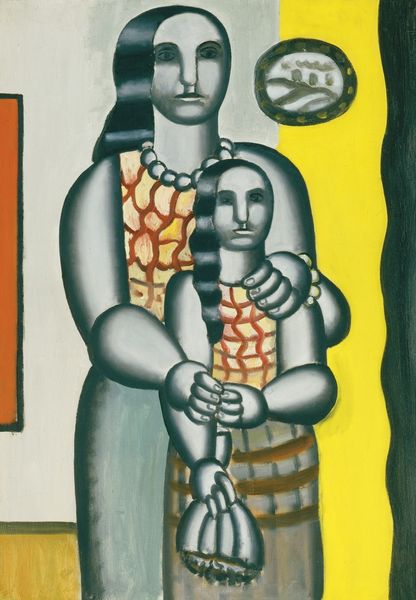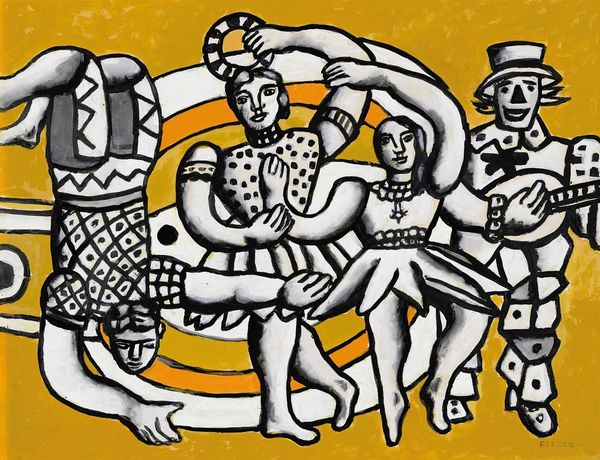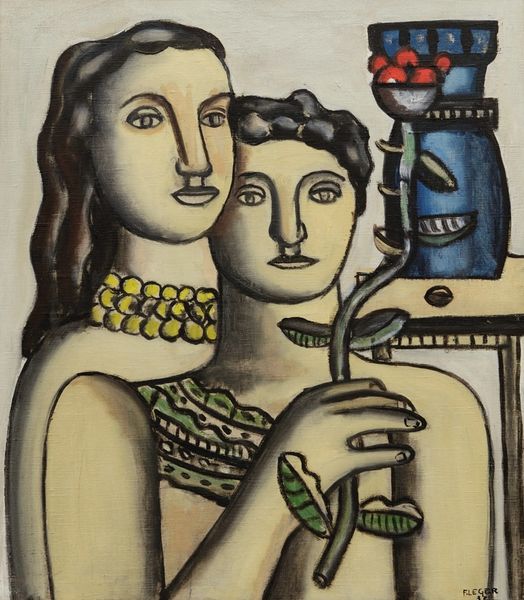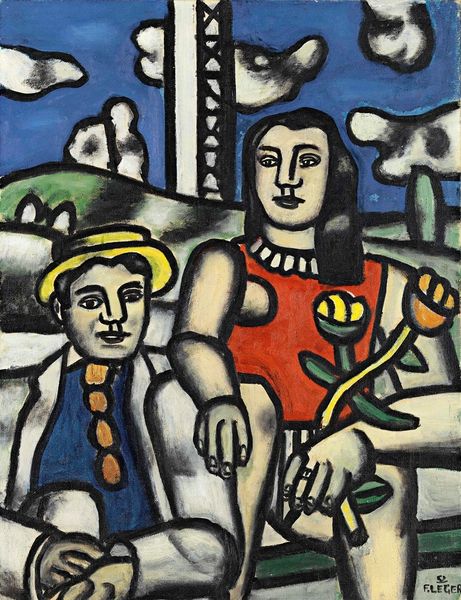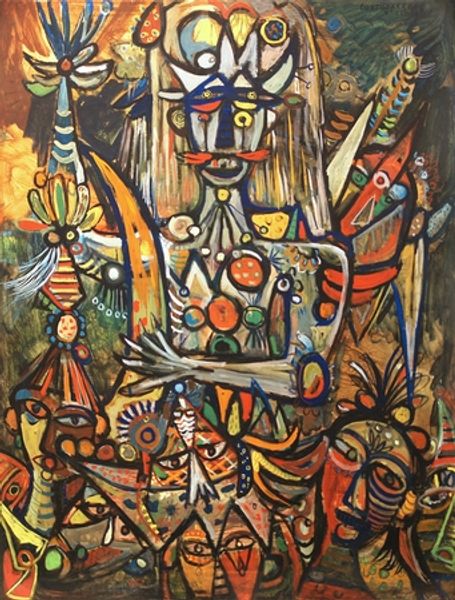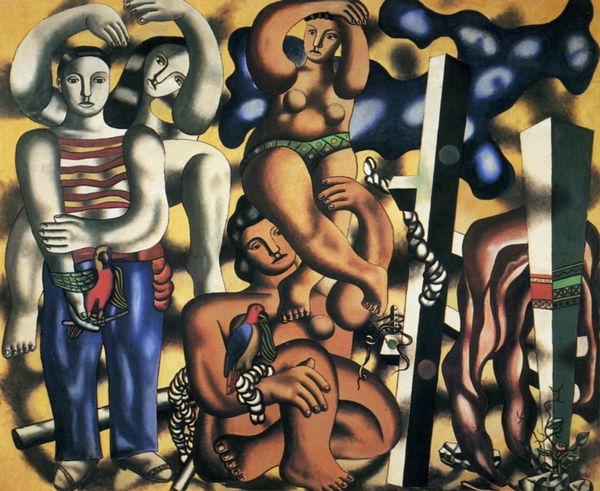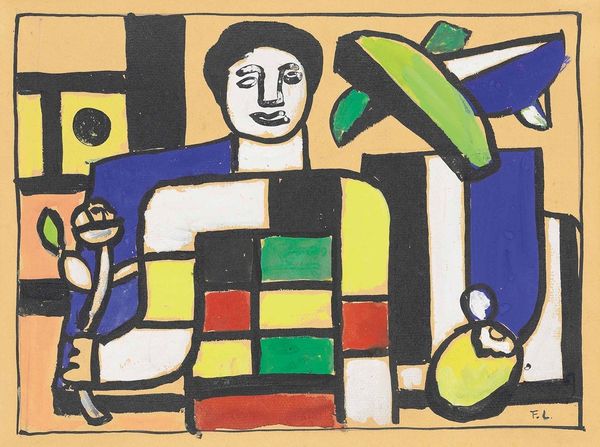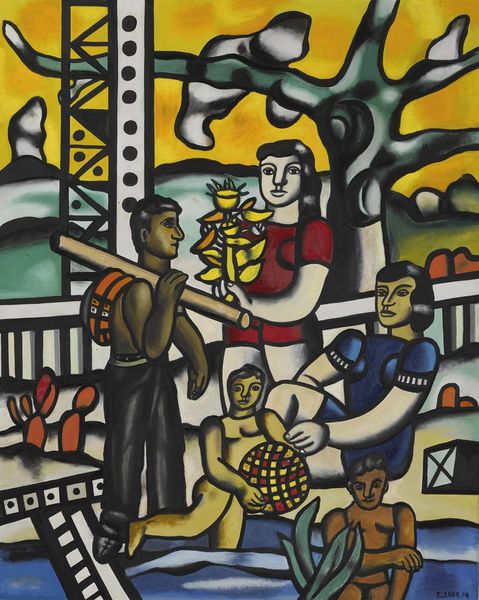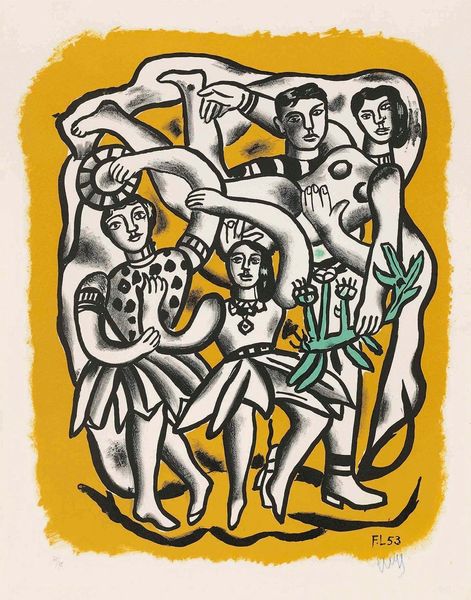
Copyright: Modern Artists: Artvee
Editor: This is Fernand Léger's "Le Campeur, étude" from 1954, crafted with acrylic paint. I am immediately drawn to the boldness of the forms. What strikes you when you look at this work? Curator: The power of Léger's composition resides precisely in that boldness, which you astutely identify. Note how forms are simplified into cylindrical volumes. The figures, the vegetation, the sky—everything is rendered as if constructed from basic geometric shapes. Do you notice the use of strong black outlines? Editor: Yes, the outlines seem to flatten the image, creating a shallow pictorial space. It’s like a combination of collage and painting. Curator: Precisely. This technique is a key aspect of Léger’s approach, influenced by Cubism. The overlapping and interlocking forms, contained by those emphatic outlines, emphasize the two-dimensionality of the canvas. Consider, too, the juxtaposition of contrasting colors - the strong yellow against the blue. What does that contrast achieve? Editor: It intensifies the visual impact, making the composition vibrate with energy. The forms are clearly defined, creating a sense of balance between the figures and their environment. It seems…optimistic. Curator: Indeed. Léger’s emphasis on pure form, bold color, and simplified structure creates a visual harmony and, as you said, an optimistic energy. Focusing on these formal elements allows us to understand how Léger translated his observations into a universal visual language. Editor: I see. Looking at the interplay of shapes and colors in this light gives me a totally different perspective. Curator: Understanding the intrinsic formal language of the artwork unlocks further insight and interpretation. It’s a lesson in how impactful basic forms and colour can be.
Comments
No comments
Be the first to comment and join the conversation on the ultimate creative platform.
